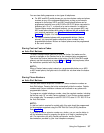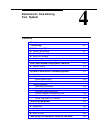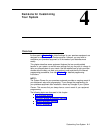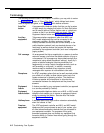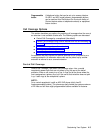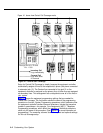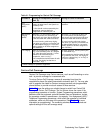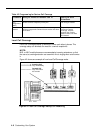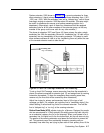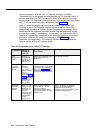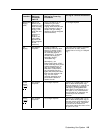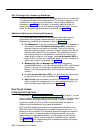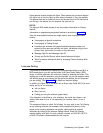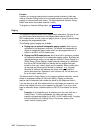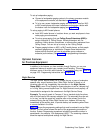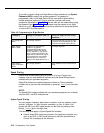
Centrex extension 1000 (shown in Figure 4-2) is a covering extension for three
other extensions. It has a primary line (-1000) and three secondary lines (-1001,
-1002, and -1003). With the secondary lines set for “delayed ring,” calls to those
lines begin ringing at extension 1000 after about 20 seconds. This setup might
be useful for someone who serves as a backup answering position for a
department. (Alternatively, each of these four extensions could be assigned
secondary lines for all the other members of the extension group, so that any
member of the group could cover calls for any other member.)
The phone at extension 1007 (see Figure 4-3) has a primary line plus a single
secondary line. With the secondary line set for “immediate ring,” all calls on the
secondary line ring immediately at the covering extension. This setup is useful
when someone screens all calls on a line, transferring them only when the user
at the covered extension wants to take the call.
Incoming Call
rings immediately
Ext. 1008
Primary
Secondary
Ext. 1007
Figure 4-3. Local Call Coverage: Immediate Call Answering
To set up Local Call Coverage, remove secondary lines from the receptionist’s
phone (the phone connected to extension jack 10) and assign them to covering
extensions as needed. (To have the receptionist keep covering some lines,
remove only the lines that will be covered by other extensions.)
Adjust line ringing for primary and secondary lines to fit the type of call
coverage you want. For example, set a primary line to “immediate ringing” (the
default setting) if calls should ring first at the covered extension. Then set the
line to “delayed ring” or “no ring” at the covering extension.
Button-Down Mode (#723)
adjusts ringing for all phones. Designed for people
who are accustomed to 1A Key systems, this setting means that calls ring only
on an extension’s primary line (or on the intercom). When a call comes in on a
secondary line, the lights next to the line button flash, but the call does not ring.
The person at the covering extension must press the line button to answer the
call. This prevents users from accidentally answering incoming calls on
secondary lines when they are trying to place calls on their primary lines. At the
Customizing Your System
4-7



